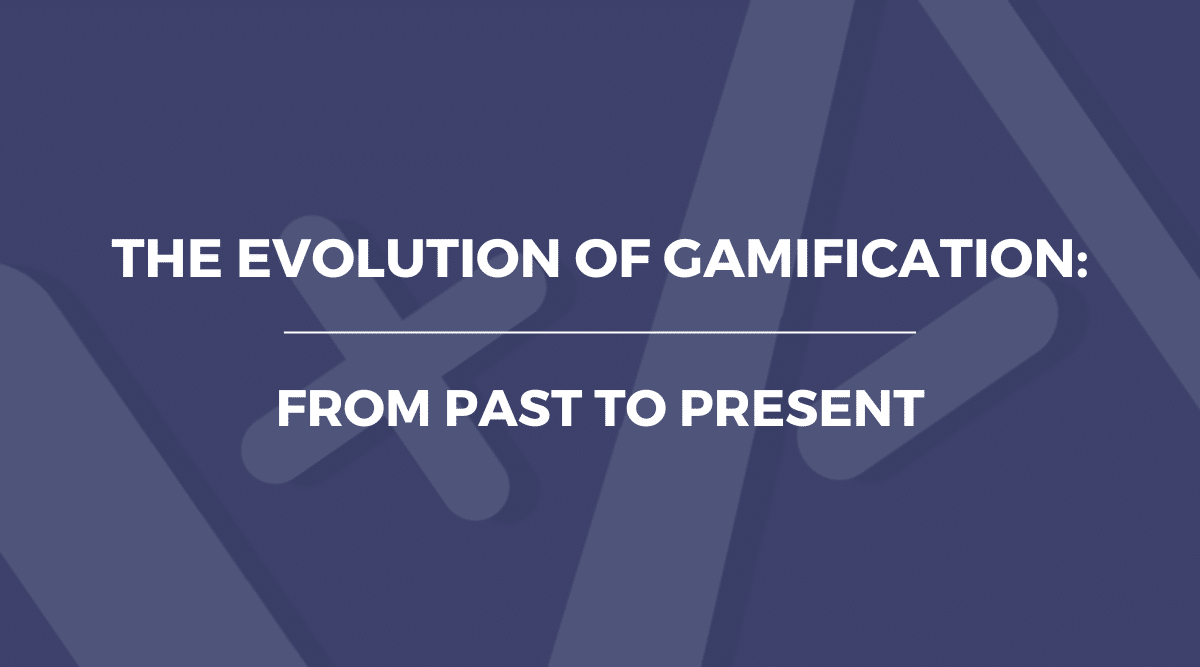Gamification Evolution: From Badges to Digital Engagement
Gamification, the concept of integrating game-like elements into various aspects of our lives, has come a long way since its inception. Throughout history, gamification has evolved and transformed, reshaping how we perceive and engage with the world around us. From early recognition-seeking efforts to modern digital engagement strategies, gamification has become an integral part of our daily lives.
The Foundation: Boy Scout Badges and Workplace Engagement
Gamification roots can be traced back to the early 1900s when Boy Scouts introduced badges as tangible symbols of achievement. These badges served as markers of recognition and reward, laying the foundation for the broader concept of gamification. They sparked the idea that acknowledgment and challenge are powerful motivators in driving engagement.
In the 1970s, Charles A Coonradt’s influential work, “The Game of Work,” recognized the potential for integrating game-like elements into workplace engagement. Coonradt’s insights transcended beyond turning work into a game; they emphasized the transformative capacity of these elements for creating engaging and rewarding experiences. This marked a milestone in shifting the narrative from work being mere tasks and deadlines to an exciting challenge.
The 1980s Technological Revolution
The 1980s witnessed a technological revolution that took gamification to a new level. Frequent flyer programs, introduced during this era, brought forth the concept of gamified customer loyalty rewards. Additionally, the rise of social video games, with Multi-User Dungeon (MUD1) at the forefront, paved the way for interactive technologies. This era showcased the potential for gamification in industries beyond traditional gaming.
Academics like Thomas W. Malone explored computer games’ motivational elements during this period. Their studies offered early glimpses into gamification applications across diverse fields and industries. It became evident that gamification could impact and motivate individuals in various contexts.
The Birth of ‘Gamification’ in the Early 2000s
The early 2000s marked a defining era with the introduction of ‘gamification’ by Nick Pelling. Platforms like Bunchball played a significant role in popularizing the term and laying the foundation for modern gamification strategies. Gamification began infiltrating daily life, driven by initiatives like America’s Army, which leveraged gaming as an educational tool to engage diverse audiences. Xbox 360’s Gamerscore system also played a key role in integrating gamification into everyday experiences.
The 2010s’ Soaring Heights
The 2010s witnessed gamification’s rise to new heights, thanks to influential figures like Jane McGonigal. Her impactful TED Talk resonated with diverse audiences, bringing gamification into mainstream consciousness. The inaugural Gsummit in 2011 further solidified gamification’s presence in the business world.
Gamification extended beyond gaming, making its way into sectors such as human resources and education. Platforms like Foursquare and Fitbit became leading examples of integrating gamified elements into our everyday lives. It was no longer just about playing games; it was about incorporating game-like structures to enhance engagement, motivation, and achievement in various aspects of life.
Pokémon Go and the 2016 Viral Wave
The year 2016 marked a major turning point with Pokémon Go’s unprecedented success. This augmented reality game not only demonstrated gamification’s viral potential but also its ability to capture users beyond traditional gaming contexts. Snapchat’s introduction of Streaks and Google’s DeepMind’s AlphaGo further expanded the integration of gamified elements into diverse applications, showcasing their versatility and adaptability.
Gamification Everywhere: 2018 and Beyond
By 2018, gamification had seamlessly woven itself into nearly every facet of our digital existence. It transcended traditional boundaries, reshaping how we engage with technology. Applications extended beyond language learning or exercise apps, infiltrating meditation, to-do lists, job applications, and daily activities. The term ‘gamification’ diversified, manifesting itself in alternative names such as behavioral design and engagement-focused experience. This linguistic shift underscored not only the prevalence but also the profound impact gamification had on shaping user experiences across various domains.
A Timeless Journey
Gamification’s evolution stands as a testament to its universal and timeless appeal. From the early recognition-seeking efforts represented by Boy Scout badges to the modern era of digital badges and interactive challenges, the fundamental human desire for acknowledgment, challenge, and adventure has remained constant. Gamification is an ongoing exploration of the symbiotic relationship between technology and human nature.
Are you ready to set out on your Gamification journey? Explore the possibilities and reshape your engagement strategies by booking a demo with our gamification experts today. Let’s unlock gamification’s power together!



